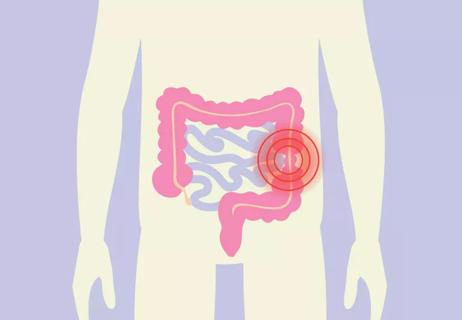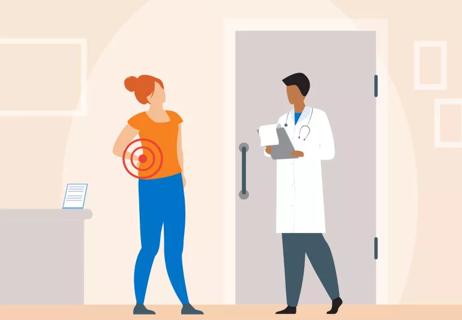Endometriosis, pelvic floor dysfunction and bladder issues can all contribute, but relief is within reach

Having pelvic pain is bad enough. But when pain down there lasts for months, and you can’t figure out what’s causing it, well, that’s pretty much a recipe for despair.
Advertisement
Cleveland Clinic is a non-profit academic medical center. Advertising on our site helps support our mission. We do not endorse non-Cleveland Clinic products or services. Policy
But there’s reason for hope, says urologist Ly Hoang Roberts, MD.
It’s true that chronic pelvic pain can often be challenging to diagnose. But challenging doesn’t mean impossible. Finding the right diagnosis is the first step toward lasting relief.
“Chronic pelvic pain” is a catch-all term for pain in the lower abdomen, pelvis or genital area that lasts longer than six months. It can be cyclic (meaning it comes and goes during your menstrual cycle) or not.
“It can be any kind of pain in the pelvic region, which ranges from below the belly button down to the genital area,” Dr. Hoang Roberts explains. “It can even wrap around to the rectum and your lower back.”
It’s also surprisingly common: In the U.S., 1 in 7 women experiences chronic pain in the pelvic area.
For women and people assigned female at birth, chronic pelvic pain can often be traced to the reproductive organs. But it’s rarely straightforward: It can also stem from your bladder, your gastrointestinal system, your nerves or your pelvic muscles — and even your hip muscles or abdominal wall muscles.
“The pelvis houses many organs, muscles and nerves,” Dr. Hoang Roberts says. “As physicians, our job is to investigate which of those is misbehaving.”
Advertisement
With so many possible sources of pelvic pain, it can be challenging to figure out what’s going on. Healthcare providers typically start by considering these usual suspects:
To complicate matters, chronic pelvic pain often comes from multiple causes at once. “One of the most difficult things about chronic pelvic pain is that there’s often more than one condition going on at a time,” Dr. Hoang Roberts notes.
If you have endometriosis or interstitial cystitis, for example, you’re more likely to develop pelvic floor dysfunction. And living with chronic pain can cause nerves to become hypersensitive and overact in ways that make pain worse.
Treatments for chronic pelvic pain vary depending on the underlying problems. In some cases, the pain may go away completely, but in many cases, pelvic pain is a chronic disease that requires long-term management.
Even in those situations, Dr. Hoang Roberts says that there are ways to treat your symptoms and keep your pain in check.
“Just because something is chronic or common does not mean it's normal,” she adds. “There are a lot of things we can do to help you.”
With so many possible causes, treating pelvic pain isn’t always straightforward. And because you could be dealing with multiple causes, your healthcare provider can’t just treat one condition at a time.
Pelvic pain specialists can act as a quarterback, managing the situation and bringing in other specialists as needed — like physical therapists who deal with pelvic floor issues, urologists to help with bladder issues or gastroenterologists for bowel problems.
Your healthcare team may recommend pursuing treatments like injections to numb your pelvic muscles or bladder instillations to flush your bladder.
Your appointment will begin with a conversation about the location, severity and possible sources of your pain, as well as any relevant medical history. Be sure to be specific and detailed in your responses.
Advertisement
“Describe your pain as specifically as possible — its location, intensity, timing and factors that make it better or worse,” Dr. Hoang Roberts advises.
Is it related to your period or ovulation? Does exercise make it feel better or worse? Does it strike on both sides of your abdomen or just one? Consider keeping a journal with these details to help your doctor spot patterns.
Depending on the source of your pain, your healthcare provider may recommend options you can pursue on your own, too, like:
“Because pelvic pain is a chronic condition that may have flare-ups, your provider can help you develop a regimen that empowers you to treat your pain as needed at home,” Dr. Hoang Roberts adds.
Your mind and body are more connected than you may recognize.
“Physical pain can cause mental stress and vice versa,” Dr. Hoang Roberts says. “If you're stressed out, you can tighten your pelvic floor muscles, which can cause them to be dysfunctional and cause pain.”
The best way to tackle pelvic pain, she continues, is to do so comprehensively with a therapist or a psychiatrist as part of your treatment team. And there are also things you can do on your own.
Advertisement
“Anyone with pelvic pain can benefit from doing stress-relieving exercises like meditation or yin yoga,” Dr. Hoang Roberts says.
The longer you live with the pain, the more likely it is that you’ll develop secondary pain syndromes — and the harder it may be to treat.
“Pain is your body's way of telling you something is wrong,” Dr. Hoang Roberts notes. “Any time you have pain, please seek care from a healthcare professional.”
She encourages people to advocate for themselves and keep trying until they find someone who gets it. If your doctor seems stumped or isn’t taking your pain seriously, then get another opinion.
Chronic pelvic pain can be tricky, but it is treatable. Dr. Hoang Roberts says: “There has been a lot of research into this condition, so we have tools to manage it, and as research continues, we hope to expand treatment options. So, there is hope.
“Though we can't guarantee that the pain will go away 100%, our goal is to lessen it so you can have a better quality of life.”
Advertisement
Learn more about our editorial process.
Advertisement

Developmental changes like puberty and menopause can impact symptom severity

Symptoms of IBS usually include abdominal pain, coupled with bloating and more

Arthritis, migraines and endometriosis are common causes of chronic pain

Eliminating certain items, like soda and citrus, can help relieve your bladder discomfort

Working your pelvic floor muscles can help you prevent and recover from urinary incontinence

A bladder infection is definitely a UTI ... but not all UTIs are bladder infections

This traditional Chinese medicine formulation may help with stress, depression and more

IBD is an inflammatory disorder, while IBS is a group of symptoms, but both need treatment

Type 2 diabetes isn’t inevitable with these dietary changes

Applying a hot or cold compress can help with pain